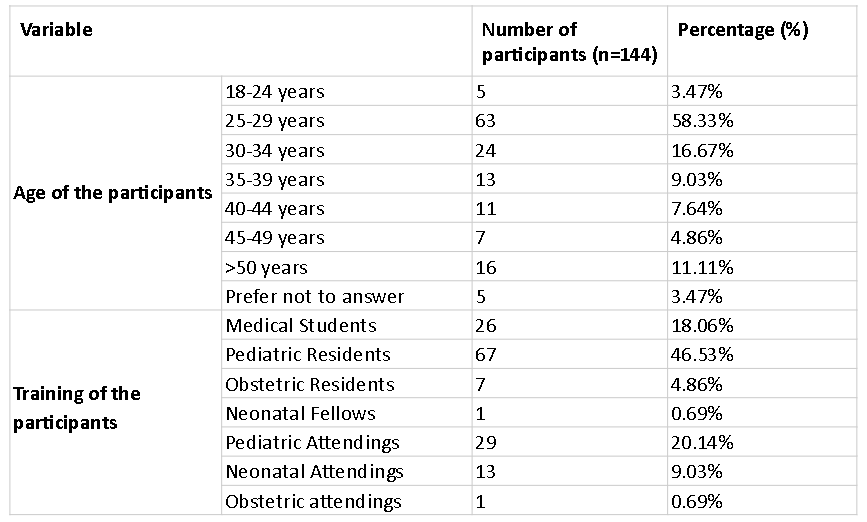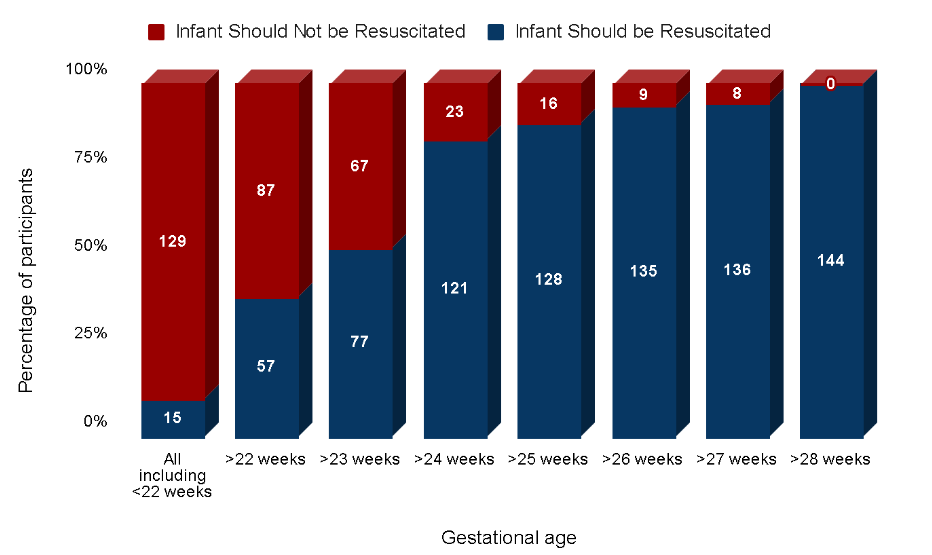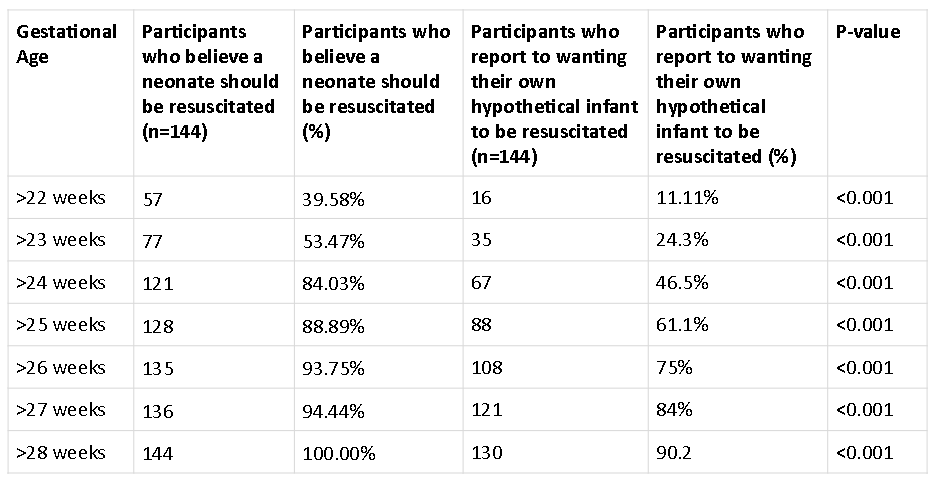Neonatology
Session: Neonatal General 1: NICU Care
60 - Healthcare Workers' Perception of Resuscitating Periviable Preterm Neonates
Friday, May 3, 2024
5:15 PM - 7:15 PM ET
Poster Number: 60
Publication Number: 60.126
Publication Number: 60.126
.jpg)
Sheetal Sriraman, MD (she/her/hers)
Resident Physician
SUNY Downstate Health Sciences University
Brooklyn, New York, United States
Presenting Author(s)
Background: Periviable preterm resuscitation is a widely discussed and debated topic in neonatology.
Objective: Our objectives are twofold: first, to determine healthcare workers' perceptions regarding the resuscitation of periviable preterm infants, and second, to compare their perceptions of resuscitating their own hypothetical infant with that of a patient.
Design/Methods: We conducted a cross-sectional study, surveying medical students, pediatric and obstetric residents, neonatal fellows, and pediatric and neonatal attendings within our institution. Informed consent was obtained from all participants before administering a questionnaire through an online survey tool. We analyzed responses using descriptive statistics. We employed the chi-square test for categorical variables to assess the relationship between the gestational age at which participants would choose to resuscitate a patient in comparison to their own hypothetical child. A p-value < 0.05 was considered statistically significant.
Results: We received responses from 144 healthcare workers, comprising 75.6% (109/144) from the Department of Pediatrics and 6.25% (9/144) from Obstetrics. Medical students made up 18% (26/144) of the respondents. The majority of our participants were between 25 and 34 years of age (60.4%, 87/144) and identified as female (66.7%, 96/144). Over half of the participants (53%, 77/144) believed that infants above 23 weeks should be resuscitated. The most commonly cited reasons for wanting infant resuscitation were the advancement of the field of neonatology (66.6%, 96/144) and the right to life (59%, 85/144). Conversely, the most common reasons for not wanting infant resuscitation were a perceived poor quality of life (84%, 121/144) and the increased impact on parents (59.7%, 86/144). The majority (84.7%, 122/144) of participants believed that parents' opinions should be considered when deciding on resuscitation. We found no statistically significant difference between the age of the respondents and the gestational age at which they believed neonates should be resuscitated. However, there was a statistically significant difference in the gestational age at which respondents believed a patient should be resuscitated when compared to the gestational age at which their own hypothetical infant should be resuscitated, with a p-value < 0.05.
Conclusion(s): The majority of respondents in our study expressed the belief that infants above 23 weeks of gestation should be resuscitated. We are currently expanding our study to include healthcare providers from across the country.



